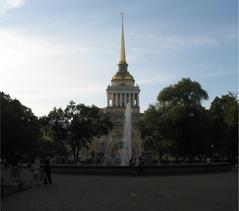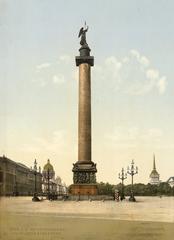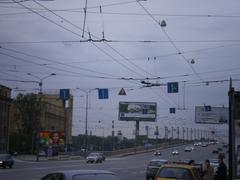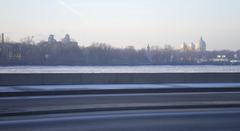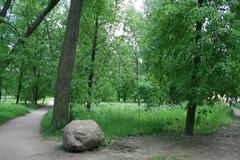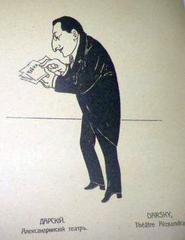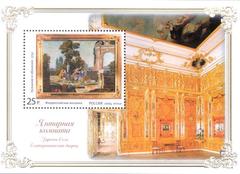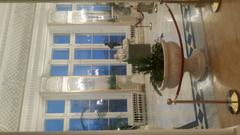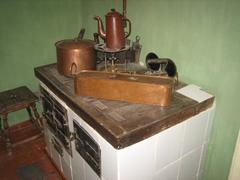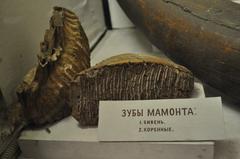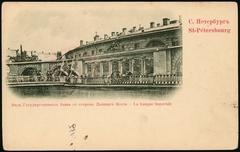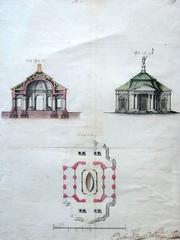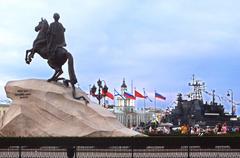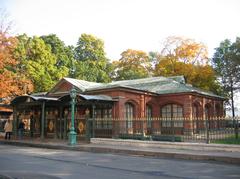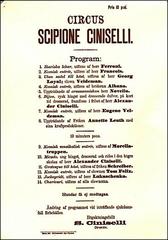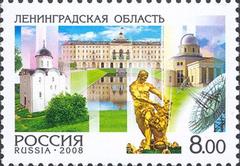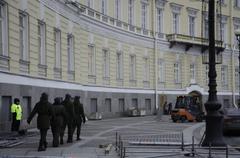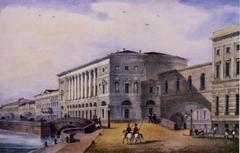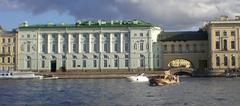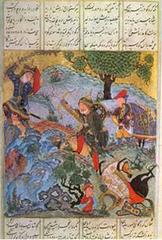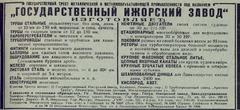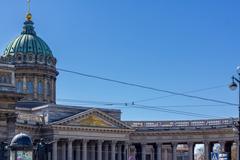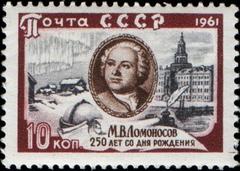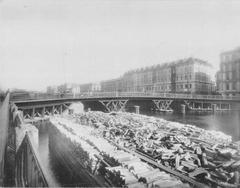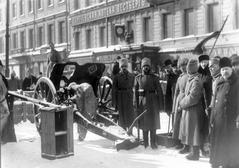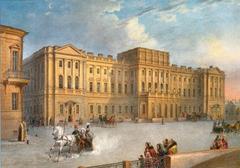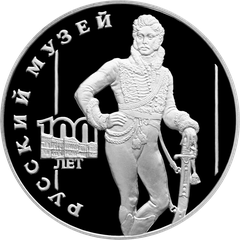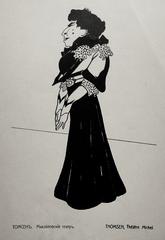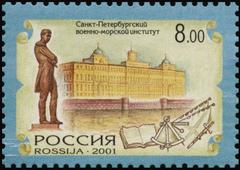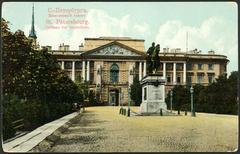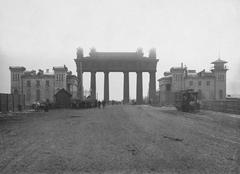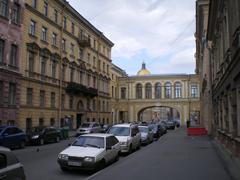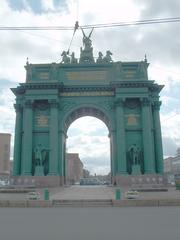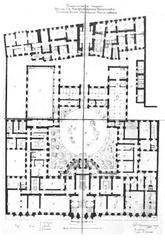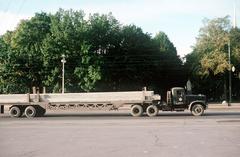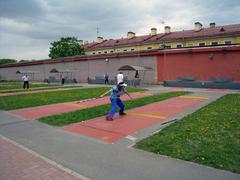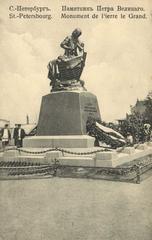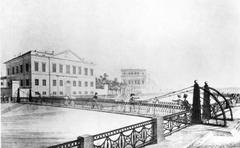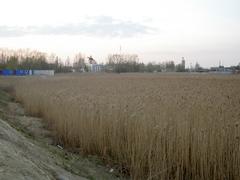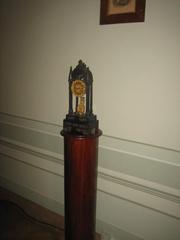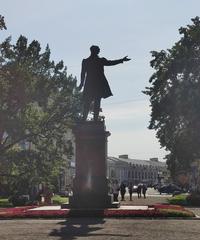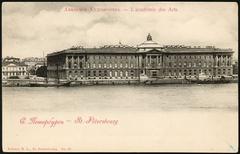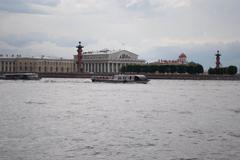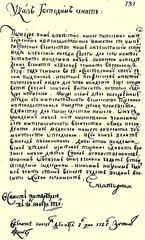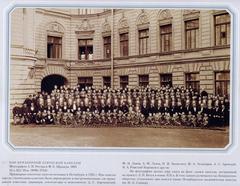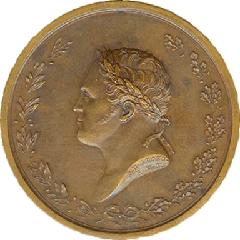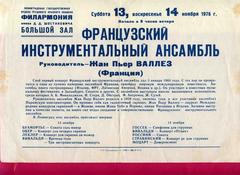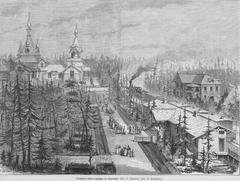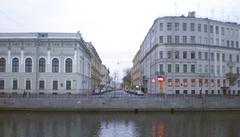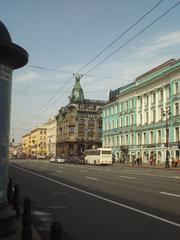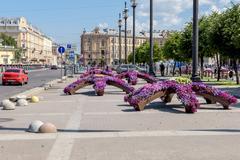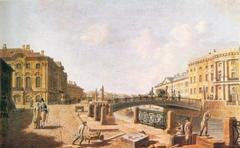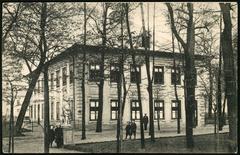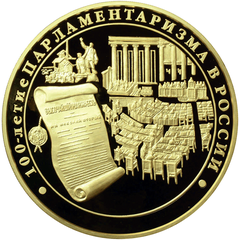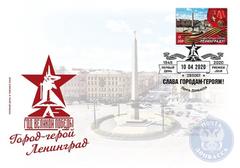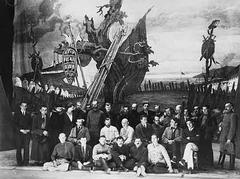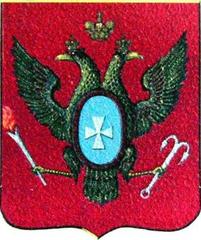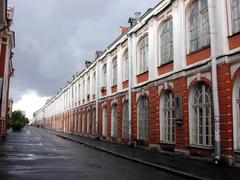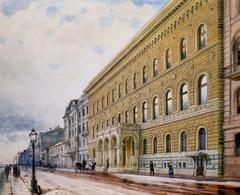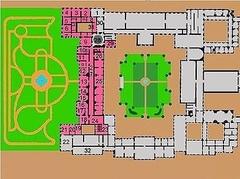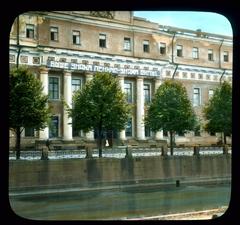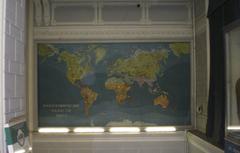Grand Menshikov Palace: A Comprehensive Visitor Guide to Oranienbaum’s Imperial Gem
Date: 04/07/2025
Introduction
The Grand Menshikov Palace, situated in Oranienbaum (modern-day Lomonosov), Saint Petersburg, stands as a vibrant testament to Russia’s early 18th-century imperial ambitions and the evolution of Baroque architecture. Commissioned in 1711 for Prince Alexander Menshikov, a close confidant of Peter the Great, the palace was envisioned as a symbol of Russia’s burgeoning power on the Baltic coast. Today, as part of the Oranienbaum museum complex and the Peterhof Museum network, it invites visitors into a world of imperial splendor, artistic excellence, and historical intrigue (Oranienbaum Museum Official Site; Saint-Petersburg.com; Petersburg24).
This detailed guide provides essential information for planning your visit, including historical context, architectural highlights, ticketing, accessibility, and travel tips—helping you fully experience one of the most treasured historical sites near Saint Petersburg.
Table of Contents
- Historical Overview
- Architectural Features & Artistic Significance
- Visiting Information
- Park and Surroundings
- Visitor Amenities
- Practical Tips for Visitors
- Nearby Attractions
- Frequently Asked Questions (FAQ)
- Summary and Conclusion
- References
Historical Overview
Construction and Early Years
The Grand Menshikov Palace was built between 1711 and 1727 under the supervision of renowned European architects such as Giovanni Maria Fontana, Johann Gottfried Schädel, and I.F. Braunstein (WantedMor; Petersburg24). Menshikov sought to rival Peterhof’s grandeur, commissioning a monumental Baroque residence overlooking the Gulf of Finland. The estate’s strategic location underscored Russia’s new maritime aspirations, while the palace’s design—two-tiered terraces, pavilions, and a canal for ship arrivals—set new standards for Russian aristocratic estates.
Menshikov’s fortunes were short-lived; in 1727, following his exile, the palace was confiscated by the state (Saint-Petersburg.com).
Imperial Transformations
After Menshikov’s downfall, Oranienbaum saw a succession of imperial owners. Granted to the future Peter III in 1743, the palace became an official summer residence. Architect Francesco Bartolomeo Rastrelli was commissioned to redesign the interiors, though little of his work remains today. The Japanese Pavilion was established to showcase a notable porcelain collection, and the Petershtadt fortress complex briefly added military flair (Saint-Petersburg.com).
Under Catherine the Great, the estate’s prominence declined, eventually being converted into a Naval Cadet College—a reflection of evolving imperial priorities.
19th & 20th Century Evolution
In the 19th century, the palace’s interiors were reimagined by architects such as Luigi Ruska, Carlo Rossi, and Andrei Stackenschneider (Peterhof Museum). The estate changed hands among noble families, and its use diversified. Notably, it survived World War II unscathed due to the “Oranienbaum Bridgehead,” becoming the only suburban imperial palace around Saint Petersburg to do so.
During the Soviet era, the palace was repurposed for educational and military needs, leading to periods of neglect (4Traveler).
Postwar Restoration and Modern Era
Restoration gained momentum in the late 20th and early 21st centuries, culminating in the 2014 reopening of the palace’s state rooms (Lonely Planet). Today, ongoing conservation preserves its Baroque legacy, and the palace functions as a museum featuring guided tours, exhibitions, and cultural events (Saint-Petersburg.com).
Architectural Features & Artistic Significance
The Grand Menshikov Palace exemplifies early Russian Baroque, with harmonious proportions, ornate facades, and integration into the natural landscape (WantedMor). Key elements include:
- Central Block & Wings: A two-storey main building flanked by Church and Japanese (formerly Oriental) pavilions, forming a unified ensemble.
- Terraces & Gardens: Two-tiered terraces with monumental staircases ascend from formal parterres and fountains towards the palace.
- Decorative Arts: Interiors feature original stucco, gilded woodwork, and parquet floors. The Church Pavilion’s domed roof and the Japanese Pavilion’s porcelain collection highlight the cultural cosmopolitanism of the Russian court (Petersburg24).
- UNESCO Status: The palace and park are part of the “Historic Centre of Saint Petersburg and Related Groups of Monuments” (UNESCO World Heritage), underscoring their universal value.
Visiting Information
Opening Hours
- General Schedule: Tuesday–Sunday, 10:00 AM–6:00 PM (last admission at 5:00 PM)
- Closed: Mondays and public holidays; the last Tuesday of each month may be reserved for maintenance
- Seasonal Variations: Check the official website for up-to-date hours and special event openings (Russia E-Guide).
Ticketing
- Standard Adult Ticket: 500–900 RUB (as of 2025; price varies by season and exhibition)
- Discounts: Available for students, children, and pensioners
- Combination Tickets: Grant access to additional park pavilions
- Purchase: On-site at the main entrance or online via the Oranienbaum Museum’s ticket portal
Guided Tours
- Regular Tours: Included in ticket price; Russian language, several times daily
- English-Language Tours: Available upon request or by advance booking for groups
- Audio Guides: Russian, English, and other languages available for an additional fee
Accessibility
- Partial Accessibility: Ramps and accessible restrooms at main entrances; some historic rooms and upper floors may have limited access (Oranienbaum Accessibility)
- Advice: Visitors with mobility needs should plan in advance and contact the museum with specific requirements
Directions & Transportation
- By Train: Suburban train from Baltiysky Railway Station to Lomonosov (Oranienbaum) station; 45–60 minutes, followed by a 15–20 minute walk or short bus ride
- By Bus/Marshrutka: Marshrutkas K-300, K-424, K-404 from Avtovo or Baltiyskaya metro stations; 60–90 minutes (In Your Pocket guide)
- By Car: Via A121 or E20 highways; parking available near the estate
- By Boat (Seasonal): Hydrofoils to Kronstadt with stops at Oranienbaum in summer
Park and Surroundings
- Size: 361 hectares, among Russia’s largest imperial parks (UNESCO World Heritage)
- Features: Formal French-style gardens, English landscape park, ponds, canals, and mature woodlands
- Additional Pavilions: Chinese Palace, Sliding Hill Pavilion, Peter III Pavilion (separate tickets required)
- Photo Opportunities: Grand facade, terraces, Church and Japanese Pavilions, and panoramic views over the Gulf of Finland
Visitor Amenities
- Café: Near the main entrance, serving Russian and European cuisine; seasonal kiosks offer snacks and drinks
- Restrooms: Modern facilities at the entrance and within the park
- Cloakroom: Free of charge; large bags and umbrellas must be checked
- Gift Shops: Souvenirs, books, replicas, and locally made crafts
- Wi-Fi: Free in the main building and visitor center
- Baby Facilities: Changing stations available
Practical Tips for Visitors
- Best Times: Weekdays and early hours for fewer crowds; spring and summer for gardens in bloom
- Dress: Smart casual; comfortable walking shoes recommended
- Weather: Bring an umbrella or raincoat; sunscreen and hats in summer
- Photography: Non-flash photography allowed in most areas; special permission required for professional equipment
- Pets: Not allowed inside buildings; permitted on leashes in the park
- Children: Welcome; educational programs and workshops available
Nearby Attractions
- Peterhof Palace and Gardens: 10 km east; accessible by car, hydrofoil, or public transport (Peterhof Museum)
- Kronstadt: Historic naval town; a popular day-trip combination
- Town of Lomonosov: Additional museums, churches, and waterfront promenades
Frequently Asked Questions (FAQ)
Q: What are the Grand Menshikov Palace visiting hours?
A: Tuesday–Sunday, 10:00 AM–6:00 PM; last admission at 5:00 PM. Closed Mondays and certain holidays.
Q: Where can I buy tickets?
A: At the palace entrance or online via the official ticket portal.
Q: Is the palace accessible for visitors with disabilities?
A: Partially; main entrances and restrooms are accessible, but some historic areas may be difficult to reach.
Q: Are guided tours available in English?
A: Yes, by request or prior arrangement; audio guides in several languages are also available.
Q: Can I take photographs inside the palace?
A: Yes, non-flash photography is allowed for personal use. Restrictions may apply during some exhibitions.
Summary and Conclusion
The Grand Menshikov Palace represents a unique blend of imperial ambition, Baroque artistry, and historical endurance, surviving centuries of political upheaval and war. As part of the Oranienbaum museum complex, it offers visitors a window into Russia’s imperial past, with restored interiors, expansive gardens, and a rich program of events. Whether you’re drawn by its architectural grandeur, art collections, or the serenity of its parklands, the palace is an essential stop for anyone exploring Saint Petersburg’s historical sites.
For the most rewarding visit, plan ahead by checking official resources for current schedules and ticketing. Enhance your experience with digital guides such as the Audiala app and consider pairing your visit with nearby attractions like Peterhof or Kronstadt.
References
- Grand Menshikov Palace: Visiting Hours, Tickets, and History of Oranienbaum’s Imperial Jewel, 2025, WantedMor
- Grand Menshikov Palace: Visiting Hours, Tickets, and History of Oranienbaum’s Imperial Jewel, 2025, Petersburg24
- Grand Menshikov Palace in Lomonosov: Visiting Hours, Tickets, and Historical Highlights, 2025, Advantour
- Grand Menshikov Palace in Lomonosov: Visiting Hours, Tickets, and Historical Highlights, 2025, Peterhof Museum
- Grand Menshikov Palace Visiting Hours, Tickets & Guide to Saint Petersburg’s Historic Site, 2025, Oranienbaum Official Site
- Grand Menshikov Palace Visiting Hours, Tickets & Travel Guide | Saint Petersburg Historical Sites, 2025, In Your Pocket Guide
- Saint-Petersburg.com Lomonosov Section, 2025, Saint-Petersburg.com
- Lonely Planet Oranienbaum Attractions, 2025, Lonely Planet
